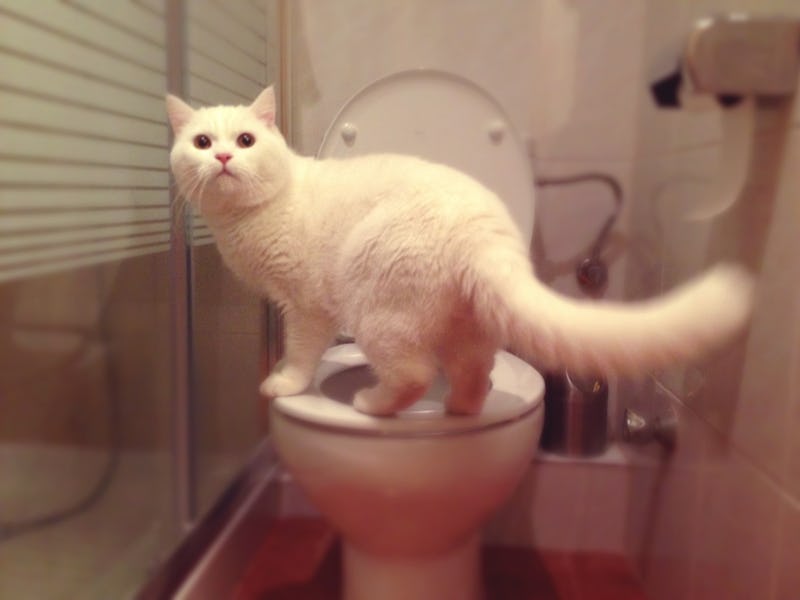Yes, You Can Train Your Cat to Use the Toilet — But Experts Warn of These Potential Consequences
Just because you can doesn’t mean you should.

Thankfully, cats come pre-potty trained. Stick your kitten in a sandy litter box and they do the rest. But cats are smart. So smart that it turns out you can teach your cat to use a human toilet. Yes, you heard that right. It is indeed possible to teach your cat to pee and poop into your household toilet — and maybe even flush. But should you?
According to cat behavior experts, the potential harms of this convenient parlor trick may outweigh any benefits. From health cues to environmental stress, it might not be worth switching from a litter box to a toilet bowl.
Toilets are oddly shaped for cats
“A couple of people have contacted me about toilet training and I refuse to do it,” says Marci Koski, certified feline behavior and training consultant at Feline Behavior Solutions.
In general, pooping puts pressure on their back legs. “They like to be on a very soft surface when they do that because their paws are super sensitive,” says Sarah Ellis, co-author of The Trainable Cat and head of cat mental wellbeing and behavior at the welfare organization International Cat Care. Precariously balancing on a plastic ring demands much more effort than squatting in a relatively stable sandbox.
As cats age, it’s more difficult for them to maneuver and hold awkward positions, like balancing on a toilet seat requires, says Koski. With that imbalance, they risk falling in the toilet and getting wet, not to mention covering their coat with germs.
You might be flushing important health cues down the drain
But using a toilet also deprives the owner of important wellness cues that the litter box offers. “A lot of feline illnesses and issues make their first appearance in the litter box,” she says. Urination and defecation frequency, consistency, and color all give important information about your cat’s overall health. “If you're not scooping that litter box daily, you miss out on the signals that your cat might be giving you that something is wrong.”
This is particularly true as cats age. For example, cats have “notoriously” sensitive kidneys, Koski says, which are more likely to fail in old age. At this point, you might start seeing more frequent urination.
Cat instincts also program a certain set of behaviors with going to the bathroom that the toilet eliminates. “They like to bury whatever they produce,” Ellis says. “The minute you put a little kitten on a surface that's very soft and rackable, that instinct just kicks in, and they'll start digging.” This behavior comes from generations of cats trying to cover their tracks from potential predators, as well as other cats from parasites in their waste. Ellis says that some cats might even try to dip their paws in the water to finish their business.
Toilet training can also create psychological stress for cats, especially if you remove the litter box altogether. “Choice is really important for cats,” Koski says. “If you leave a litter box out, you'll probably see that your cat is choosing to use the litter box over the toilet because it's more comfortable for them. It meets their instinctual needs better.”
Cats are certainly capable of learning to use a toilet. (Koski even says she’s had “one or two” clients tell her that their cats have learned to use the toilet on their own.) But that doesn’t mean that going to all the trouble of training your cat to go to the bathroom human-style is better than letting them do exactly what they were meant to.
“It's just not natural for cats to do,” Koski says. “I don't like it when we force cats or any other animals to do things that really aren't within their wheelhouse.”